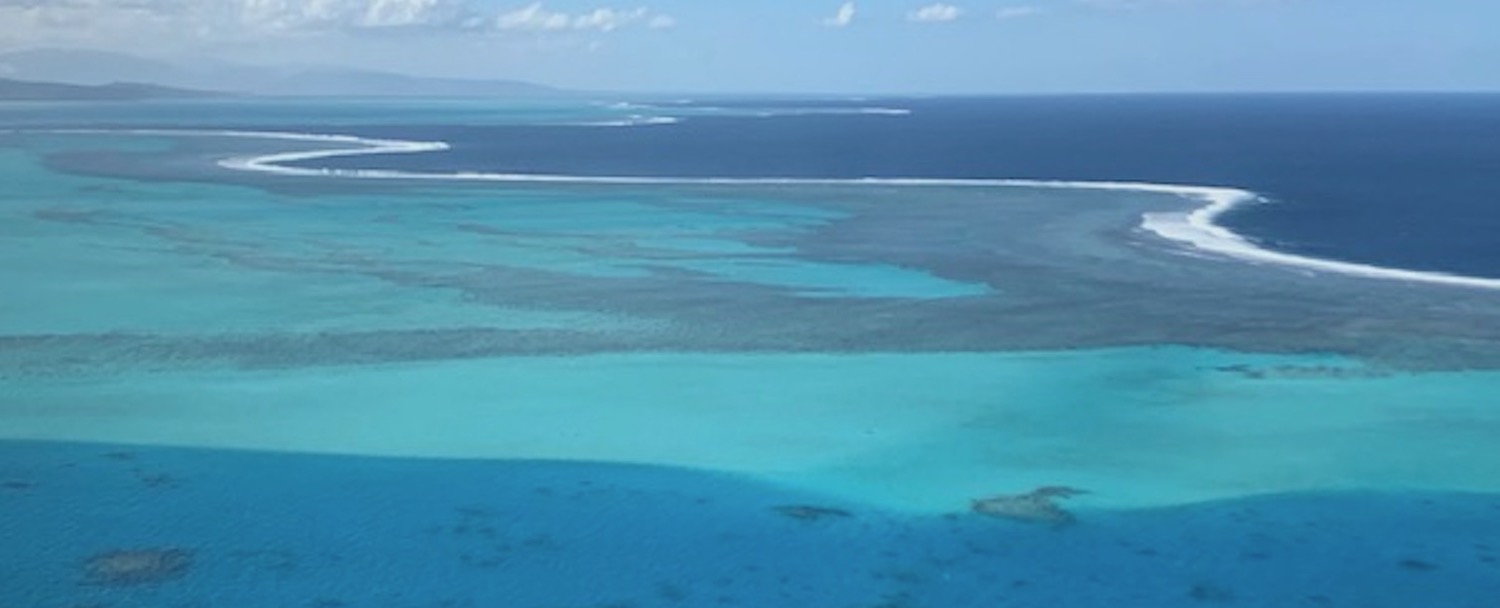New Caledonia is one of the most beautiful countries on earth. Simple as that. Yet often overlooked even by travellers to Melanesia. We found almost no foreign tourists here at all.
The main island of Grand Terre is a slim chunk of land 400 by 50 kilometres that runs at a 45 degree angle from north-west to south-east. It is stunningly mountainous, causing British explorer James Cook in 1774 to name his find with reference to the Scottish Highlands. But its glory is that it is circled a few hundred metres out to sea by a coral reef, which creates a bright white line of surf where the waves break and encloses a shimmering turquoise lagoon all the way around the entire coast. The same happens at several satellite islands, especially Ile Des Pins in the south-east and the three Loyalty Islands to the north-east, which are also blessed with some of the whitest, softest sand on earth. No wonder the entire coastline is UNESCO protected. Really, there are no words adequate.
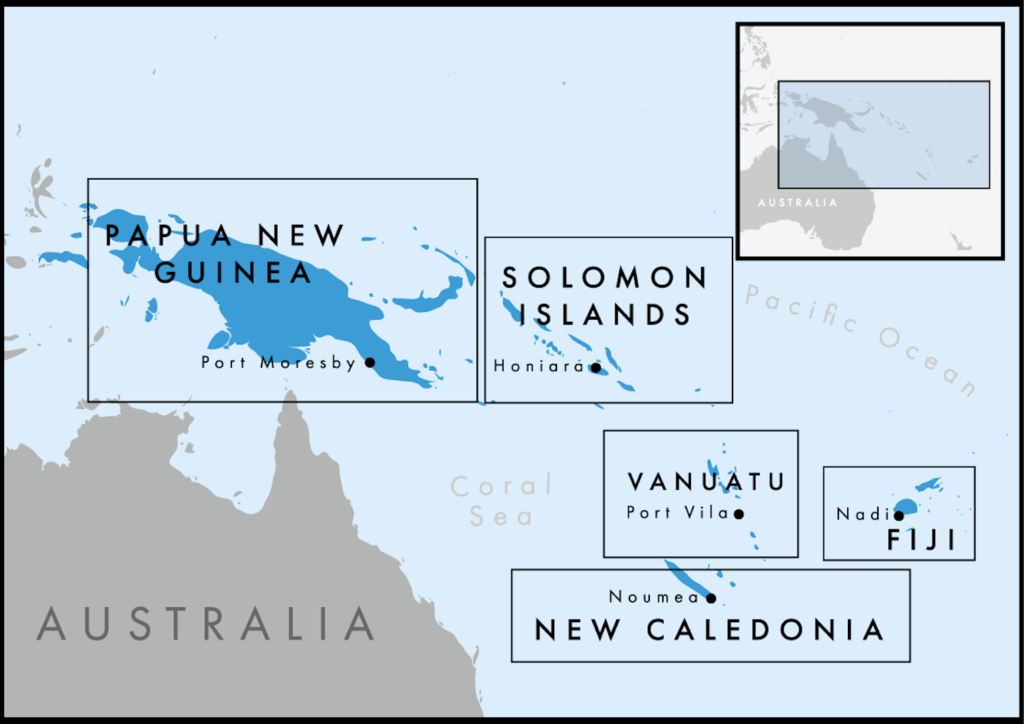
It takes an hour to fly due south from Port Vila in the New Hebrides, as Cook called modern Vanuatu, to Noumea, the capital on the southern tip of Grand Terre. Heading away from the equator, it is noticeably colder here: about 23°C in the day and 18°C over night in the cooler, drier months of winter (May to October) which are better for visitors than the hotter, wetter season. The air is crisp and clear, healthily full of light blue skies and winter sun. A perfect match for the cleanest, clearest, bluest, greenest, turquoisest ocean I have ever seen. The horizon line is very sharp.
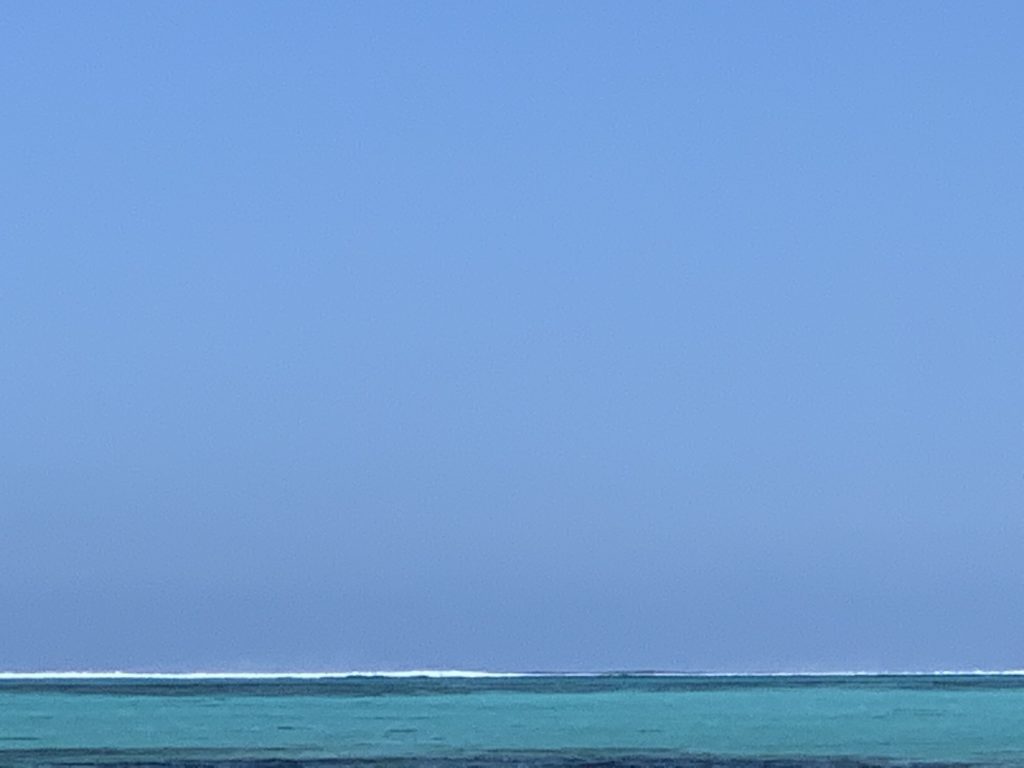
Despite its Scottish name, and close proximity to Australia and New Zealand, New Caledonia is very French. France took possession in 1854, turned it into a penal colony, and then discovered nickel, which founded a mining industry that has made this the most economically developed place in Melanesia. However, indigenous Kanak people were excluded from the mines, confined to reservations, and then suffered from measles and smallpox, diseases imported from Europe.
In 1946 New Caledonia formally became a French Overseas Territory and in 1953 French Citizenship was granted to all residents, regardless of ethnicity. The rise of a militant Kanak nationalist movement in the 1980s failed to win self-rule as Fiji (1970), Papua New Guinea (1975), the Solomon Islands (1978) and Vanuatu (1980) all broke free of their imperial masters. Instead, an accord was finally signed in 1998 that promised a referendum on independence within ten years. In 2018, New Caledonians voted 56%-44% to remain French, though it is widely expected there will be a re-run within a couple of years.
Grand Terre
There are just under 300,000 New Caledonians and a third of them live in Noumea, a substantial modern city that could easily be in France. There are no Pacific Island floral shirts, no betel nuts and no kava. Yet oddly there seem to be minimal local data agreements with global mobile phone operators so there is very limited connectivity. Try ncpocketwifi.com to get you by.
New Caledonians spend the Central Pacific Franc, and in Noumea shop for high-end Paris fashion brands, though many outlets are closed for long lunch breaks. There are very good roads and buildings with contemporary architecture, and excellent restaurants full of warm bread, excellent wines and cheeses, expensive foie gras and truffles, acerbic service attitudes and smokers.
An hour north of Noumea is the airport and at the southern tip of the town is Baie de L’Anse Vata, a 1km gorgeous sweep of narrow sand, popular with locals who eat and drink all day at the tables and benches peppered amid the palms. At the eastern end is the Meridian Resort & Spa, the best hotel in the city, with a good pool facing the beach. Near here, Le Roof restaurant sits at the end of a long pier out to sea, at the start of which is La Bodega Del Mar tapas bar. Both have great views across the bay.
Half way along Baie de L’Anse Vata is the Hilton, near a small parade of restaurants and beach sport shops; Stand Up Paddling is the thing here because the waters are so still. Just behind are the Ramada and popular boutique Le Lagon, both set back from the ocean.
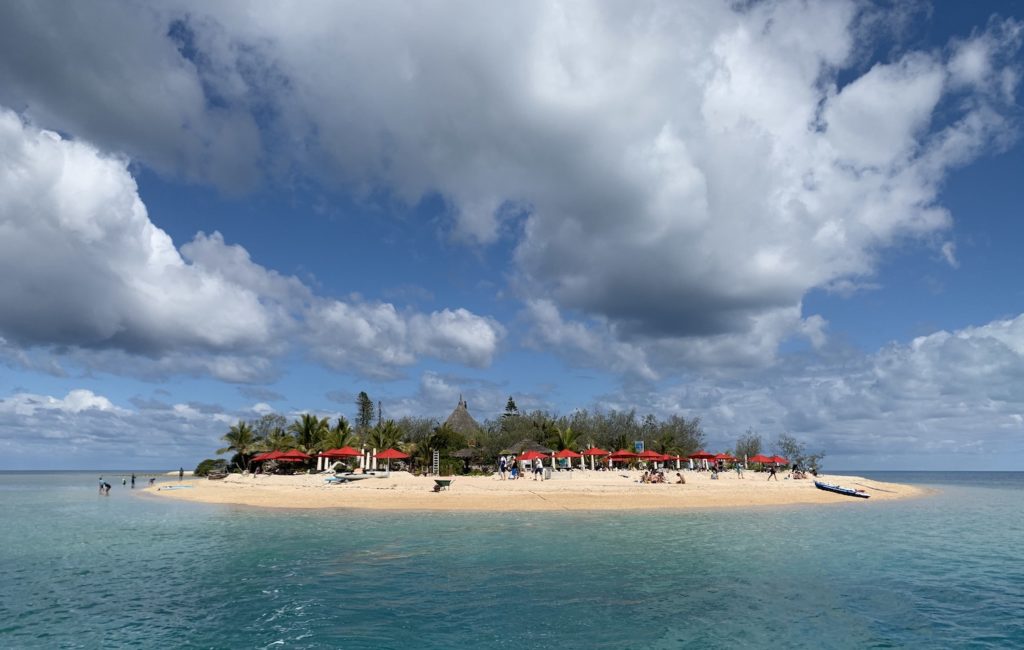
To the west of Baie de L’Anse Vata is a small hut where yellow water-taxis skid up on the beach. Every ten minutes or so they barrel over the five minutes it takes to reach Ile de Canard, a tiny flat slab of white sand perfectly set in the centre of the bay. There is a beautiful restaurant hidden among palm trees in the middle of the island, which takes a full five minutes to walk the circumference. There are red sun loungers for hire all the way around and perfect views over the calm blue water back to the soft white beach and the rolling green hills behind Noumea. This is the very picture of South Pacific glamour.
Further out in the ocean, again five minutes by water-taxi, there is another small island: Ilot Maitre. On the side open to the sea, this has a gorgeous hotel with classic cabanas on stilts over the water near the ferry pier, faced by a cluster of moored yachts. Just 50m away on the other side, facing Ile de Canard and Noumea, a strip of sand runs all the way down; from here you can walk out into the ocean a hundred metres or more to an isolated sandbar.

Back on the mainland, around the south-west corner from Baie de L’Anse Vata and a short walk along the corniche, is another beach, slightly shorter, flecked by palm tree shadows, at Baie des Citrons. Here there is a comfortable if slightly downmarket parade of bars and restaurants with tables and chairs open to the air and facing the wonderful burning sunset. It is worth noting that things close quite early, perhaps not least because it just doesn’t feel very much like a holiday resort and at night it can be a bit chilly.
Several contiguous large marinas harbouring many large yachts then stretch all the way up to the heart of the town at Place des Cocotiers, a park surrounded by fancy shops and street markets on a slope down from the hill on the east to the ocean on the west. The whole area is a joggers’ paradise.
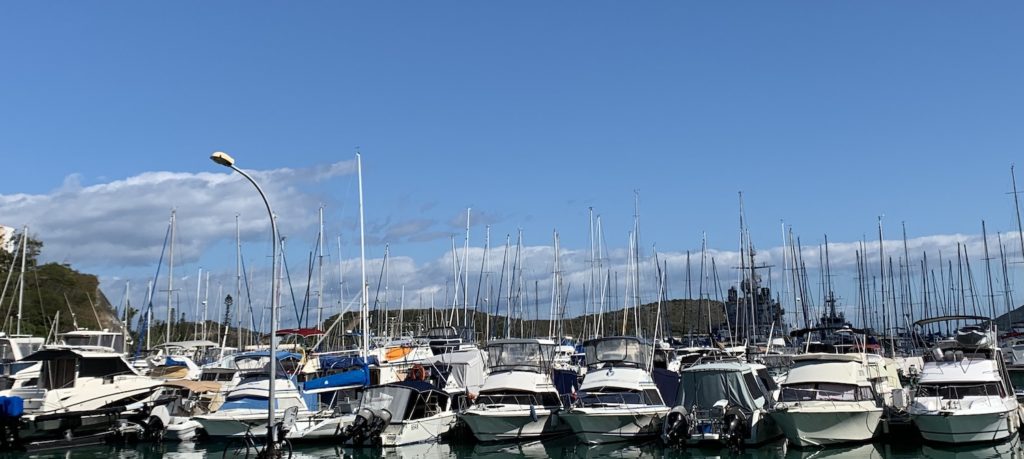
Noumea and its beaches and islets are beautiful alright, but as this is only a taste of the delights to come you will need hire a car to explore other parts of Grand Terre. The most accessible place right down south is Budget, near the Hilton.
Heading north on the perfect tarmac of the RT1 you will pass many small villages, usually with their own church and often with a cinema. There are also many roadside shacks selling fruit and vegetables, apparently abandoned but in fact with honesty boxes. After about an hour and a half you reach the small town of Boulouparis. Just after here is a left turn which runs for 7km to Plage de Bourake. You will surely be the only ones at this most beautiful narrow strip of brown sand lapped by gentle waves from the turquoise ocean, almost entirely enclosed by parched rolling hills, silhouetted in succeeding lines as far as the eye can see. There is seating at benches with BBQ cookers under roofed shelters along the beach among the palms. There is nothing else, and nobody else, here. The perfect place for a tranquil picnic.
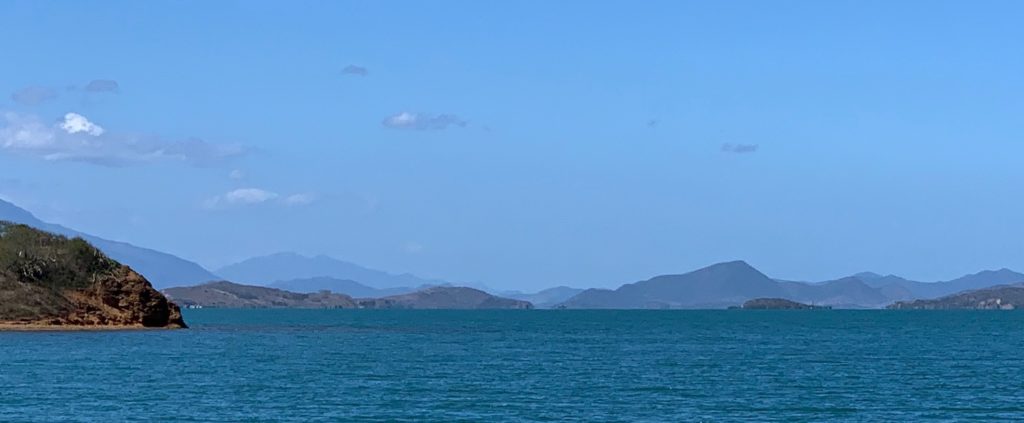
Turn back up the RT1 for another hour or more until you reach the pretty town of Bourail. Bourail is cows and cowboy country. Around here they sing Country and Western songs … in French. They even have a rodeo fair every August that attracts 25,000.
Just before Bourail there is another left turn. After a few minutes along here you will come to La Roche Percee (“pierced rock”) and La Bonhomme (“tubby man”) on the rocky headland at the north end of a nice brown sand beach whacked by powerful waves sneaking through a small gap in the reef. Half way down, behind the road at the back of the beach, is the one snack restaurant.
Another 10km along the offshoot from the RT1 is Plage de Poe, a more or less deserted long beach facing the turquoise ocean and with terrific views of the waves rolling over the reef. There may be a couple of campsites and snack restaurants around here but nothing is very visible, certainly not the Sheraton Spa & Golf Resort 5km away.
It is another 100km up the RT1 from Bourail to Kone. On the left just as you enter town is the Hibiscus Hotel, the plain exterior of which hides two fabulous courtyards with rooms set around, the top shop we found for South Pacific arts and carvings, and a French restaurant that could be the best in the country.
The reason for coming here is that it is definitely the best place in the country to get a panorama of the awesome lagoon as well as to see the Heart of Voh, an unusual land feature. You do all this from a James Bond-style microlight you book in advance via the Hibiscus that leaves Kone airport five minutes down the road.
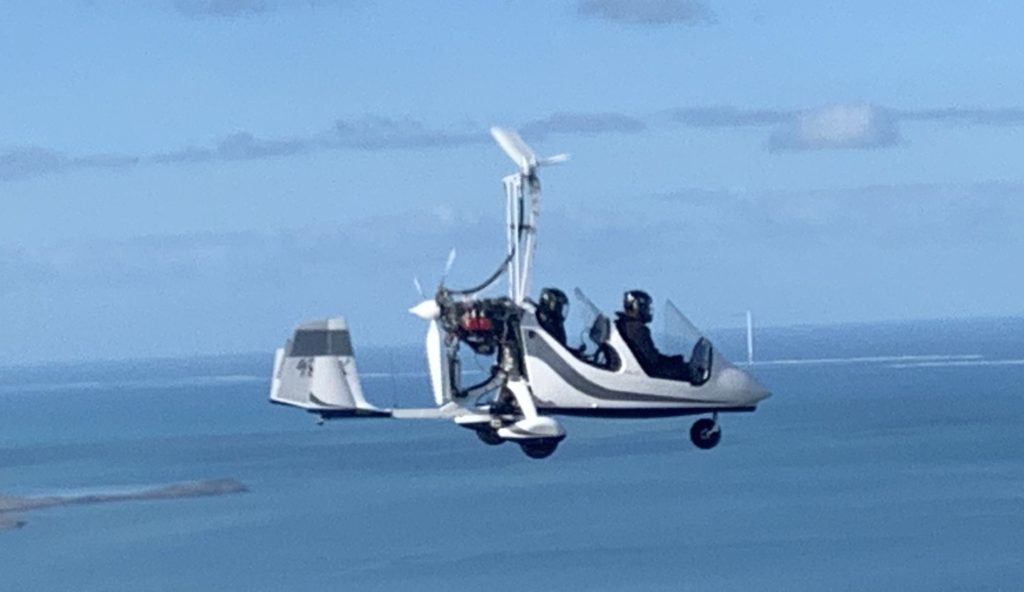
They fly with two machines in the air at once so it is very easy to take pictures of each other as well as the scenery below. Each trip last about an hour and they fly all day. They say they fly about 300 days every 365, only occasionally grounded by cloud. Our flight was set for 7am. We arrived at 6.30 just to be sure we didn’t miss it. There was bright blue sky when we left the hotel, but 2km later at the airstrip it was grey and even starting to rain. We were sent back to the hotel for breakfast with heavy concerns that this was one of the 65 days. Yet by 8am we were summoned back as the sky was bright blue again.

In this photograph, to the right of the white surf line is the deep blue open water, to the left is the turquoise lagoon that runs to the mountains in the distance, and just to complete the scene in the foreground is a blue hole. Not visible in this picture are the rays and turtles I could see underwater from the microlight.
The other natural phenomenon here is the Heart of Voh. Voh is a town 20km from Kone that has become an attraction because of a local formation of vegetation that resembles a heart when seen from above. It was made recognisable around the world by aerial photographer Yann Arthus-Bertrand who put the image on the cover of his 1999 best-selling book Earth From Above. Your microlight will take you right over it.

Ile des Pines
As if Grand Terre was not enough, Ile des Pines is 110km south-west of Noumea, just above the Tropic of Capricorn, an half hour flight with Air Caledonie or a two and a half hour ferry with Betico that leaves from right near Place des Cocotiers.
We took the ferry first thing. For over an hour down the Grand Terre coast the highlands roll moody black and white silhouettes as the sun slowly rises to bring yellow then blue hues.
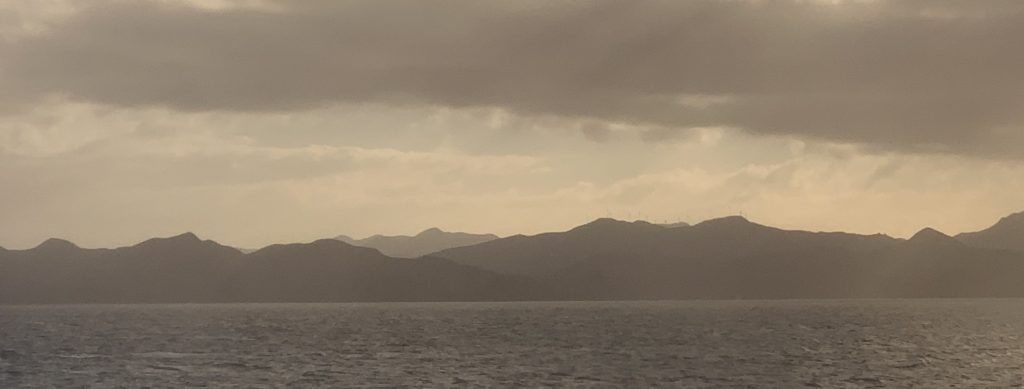
Then it is a bit more than another hour crossing the open sea. The eponymous pine trees atop the hills are immediately and beautifully apparent to eye and nose as the boat docks right by two of the world’s very best beaches.
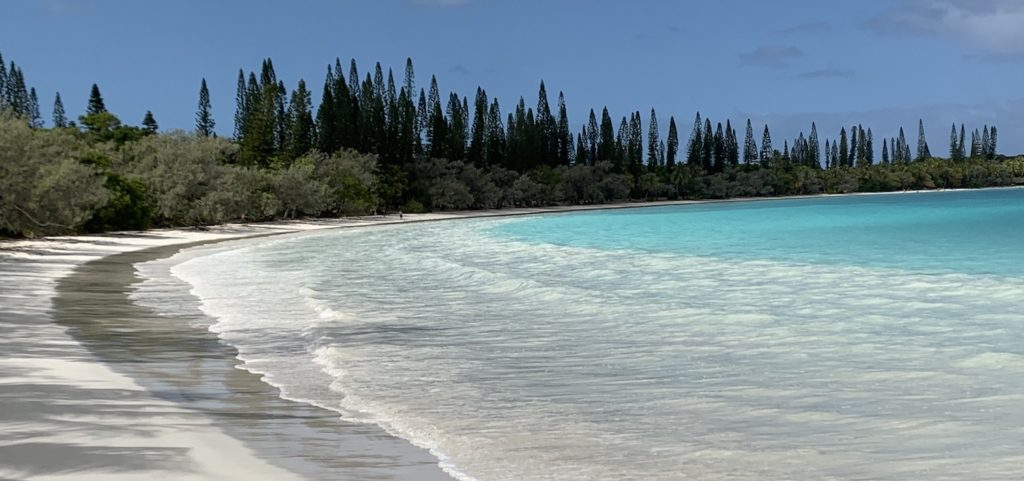
Baie de Kuto sweeps south-north. The water is brilliant turquoise and the sand is brilliant white, powder like flour. Hotel Kou-Bugny is about half way along.
Right next door Baie de Kunumera runs west-east. Here the azure water is enclosed in an almost complete circular bay with small islands in the centre and the wonderful Ouré Tera Lodge at the east end.
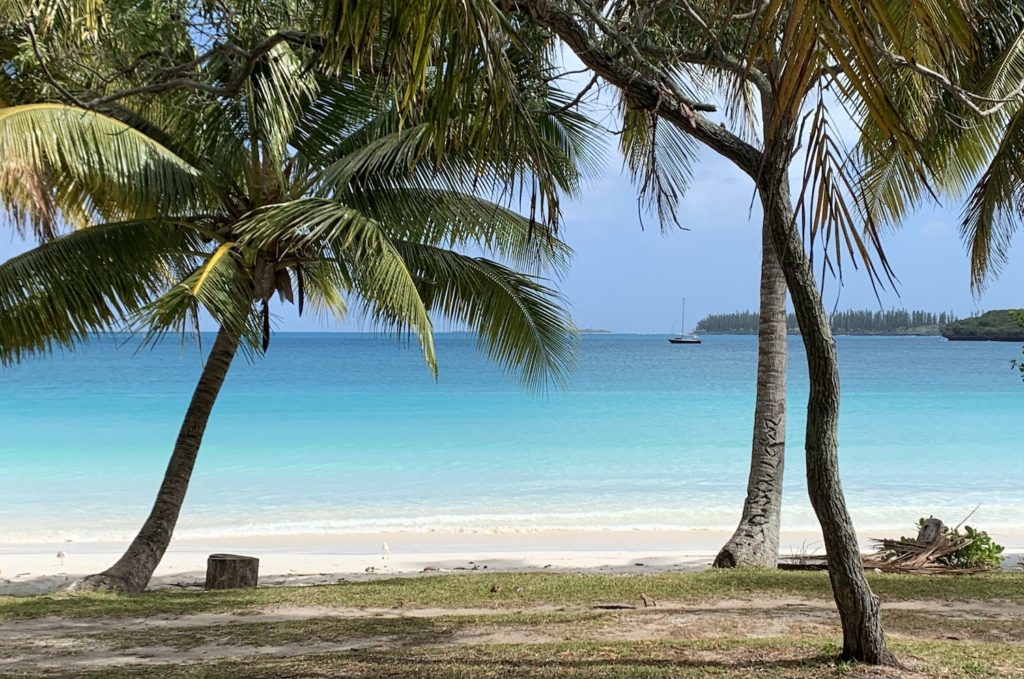
Behind Ouré Tera Lodge there is a campsite and from here you can rent a scooter to explore the island. If this isn’t your thing, it is advisable to pre-book a taxi to collect you at the ferry dock, otherwise there are very few transport options on Ile des Pines. There are immaculate empty tarmac roads with occasional and evidently unnecessary zebra crossings. There is a good example of a typical New Caledonian church, and a very pretty Piscine Naturale.

Some 200km east of Grand Terre are the Loyalty Islands, which yachties declare to be just as stunning: Mare, Lifou and especially Ouvea.
All in all, New Caledonia is a proper paradise: economically developed, overlooked by tourists, and with outrageous beauty on land and in sea. What more could you possibly want?
